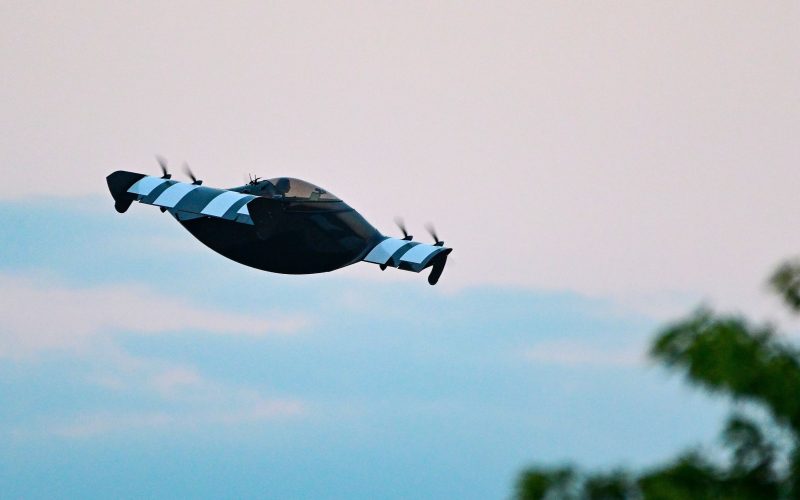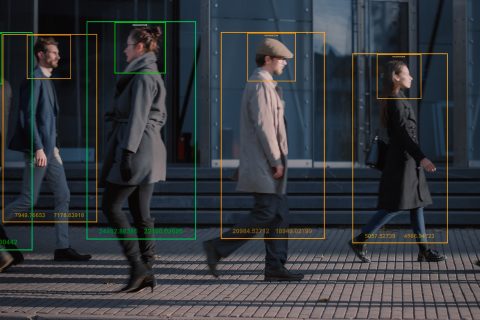A running joke in the tech world is that flying cars are perpetually three to five years away. So when will they ever be a reality? New Yorker staff writer Gideon Lewis-Kraus joins host Krys Boyd to discuss the industry trying to create “electric vertical takeoff and landing vehicles”—a.k.a. flying cars—and what it was like for him to actually fly one of the prototypes. His article is “Flight of Fancy.”
What the first years of flying cars would look like
By Shaunessy Renker, Think intern
Flying cars have been a figment of fantasy in popular culture for quite a long time. Movies such as Blade Runner, Back to the Future, and even The Man with the Golden Gun, the ninth film in the James Bond series, feature flying cars or some sort of ‘roadable aircraft.’ The invention and popularization of such a vehicle has been highly anticipated for the last century, so where are they?
“So there’s kind of an old joke that these things have been two to three years away since the early 90s,” says Gideon Lewis-Kraus, New Yorker staff writer and author of “Flight of Fancy.” “There are a lot of things that would have to happen.”
Lewis-Kraus says that for ‘flying cars’ to be integrated into society there need to be massive changes made to the infrastructure of urban landscapes and airspace control.
“Certainly, our current air traffic control is not prepared to allow that to happen,” he says. “Right now we have pretty strict minimum separation standards for how far apart aircraft have to be in the sky, especially in congested airspace.”
The first successful prototypes of eVTOLs, electric vertical take-off and landing aircrafts, don’t require a license to operate and are solely for recreational use. Lewis-Kraus says the use of the aircrafts are targeted towards people who own a lot of land since they’re greatly constrained in terms of its surroundings. More specifically, eVTOLs can’t operate in windy or rainy weather and congested airspace, they’re limited in terms of altitude, and their current battery capacity is a mere 25 minutes.
“The way that they [eVTOL manufacturing companies] envision it this first-use case are gonna be more or less what helicopter services are like now,” says Lewis-Kraus. “The first iteration of these are going to be piloted. One of the big hurdles to overcome outside of the technological limitations is just passenger-consumer behavior and passenger expectation.”
Lewis-Kraus says that through conducting different business model calculations, eVTOL companies discovered that having aircrafts operated by pilots indefinitely would not be sustainable long term. Given the daunting pilot shortage airline companies currently struggle with, finding pilots to take on eVTOL transport would be incredibly difficult.
“Some of the companies have bet on the idea that the first to market will be piloted air taxis and then down the line—once people are used to those and once people see that it’s safe and reliable—then they’ll introduce autonomous drone taxis,” says Gideon Lewis-Kraus.
Lewis-Kraus predicts that autonomous air taxis would operate like shuttles and fixed departure and arrival locations would be established. This is because allowing anyone to own an eVTOL for personal use and then to fly it wherever they please could result in chaotic and congested airspaces, especially in urban areas. So, the first ‘flying car’ services will operate similar to how helicopter companies are run today.
“You’ll be able to go to what they call your local Vertiport… and you would book it through an app,” says Lewis-Kraus. “You would stroll over to the Vertiport, you would get through security and board in seven minutes. And then 10-15 minutes later you would be from Manhattan to JFK airport… these would be run on regular schedules.”
He says that a ticket for the first commercial eVTOL flights would be priced at about the cost of a helicopter trip which hovers around $175 per seat.
“One of these companies as signed a memorandum of understanding with the city of Brisbane to fly passengers for their 2032 Olympics which does seem like a much more plausible timeline,” says Lewis-Kraus. “Within 10 years there will be some form of air taxi flying around.”





